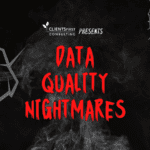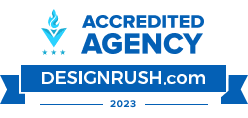The Dirty Data Domino Effect: Mastering the Game – Part 3

We could talk all day about the giant puzzle created by dirty data. But to master the data quality domino game, it’s more important to focus on stopping the data dominoes from falling and blocking future issues so you don’t get buried under a pile of bad data.
Based on more than a decade of experience in working together with hundreds of top firms on CRM and data quality projects, here are some top tips to help you identify data quality issues and prevent future problems.
1. Assess: Start by stepping back from the never-ending data deluge and take a minute to assess the mess and come up with answers to a few important questions that can help you to scope the situation:
- How much bad data do we have?
- Where is it located?
- How did it get there?
- Who is in charge of it?
- What is it costing us?
- What is the best way to clean it up?
- Who will assist with cleanup?
- How long will the cleanup take?
- How much will the cleanup cost?
2. Plan: In determining the best way to clean the data, it’s helpful to start with a cost-benefit assessment to help determine the best way to proceed. For instance, if you have a significant amount of bad data, it may be more efficient to start with an automated data cleaning and appending option. This type of technology can help to improve and enhance a large amount of data in a quick and cost-effective manner. But it’s important to note that an old adage also applies to data quality projects: you can have quick, cheap or good – pick any two. So, after any automated data quality process, always take time to analyze the results because they will not be perfect. But also remember that sometimes perfect can be the enemy of good. For some data sets, good may actually be good enough.
3. Data Stewarding: If you still have a lot of bad data remaining that is crucially important, such as top client information, or if you happen to work in an organization that can be a little fanatical about the quality of their data (you know who they are), then you will want to move forward with manual data stewarding to research, clean and append missing information to the remaining records. Additionally, in organizations that need good reliable data going forward (you know who you are…all of you), ongoing data stewarding will often be essential.
4. Prevention: Once you are comfortable with the quality of your data set, the next step is to prevent future data problems. Too many firms perform a mighty (and mighty expensive) cleanup effort only to then stop and take a ‘breather.’ But maintaining good contacts has to be an ongoing priority, especially if you don’t want to repeat the whole painful process over again every few years.
– At CLIENTSFirst, our team of almost 100 consultants and data quality professionals has spent more than a decade helping hundreds of professional services firms assess and address their data quality challenges. If you need help with strategies for winning the data quality domino game, feel free to contact us at 404-249-9914 or Info@CLIENTSFirstConsulting.com. We have helped hundreds of organizations improve data quality and we are always happy to share information, ideas and best practices for success.







